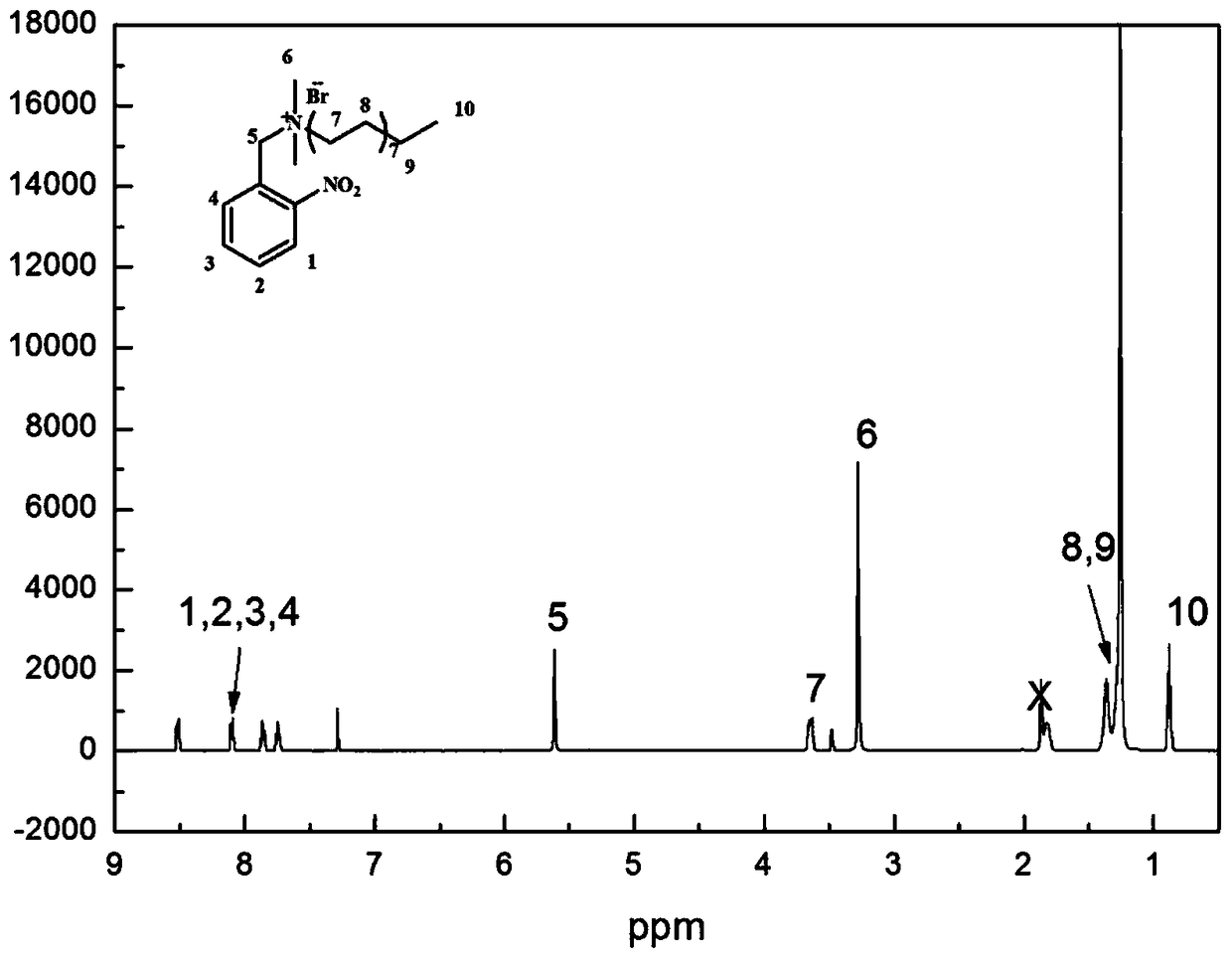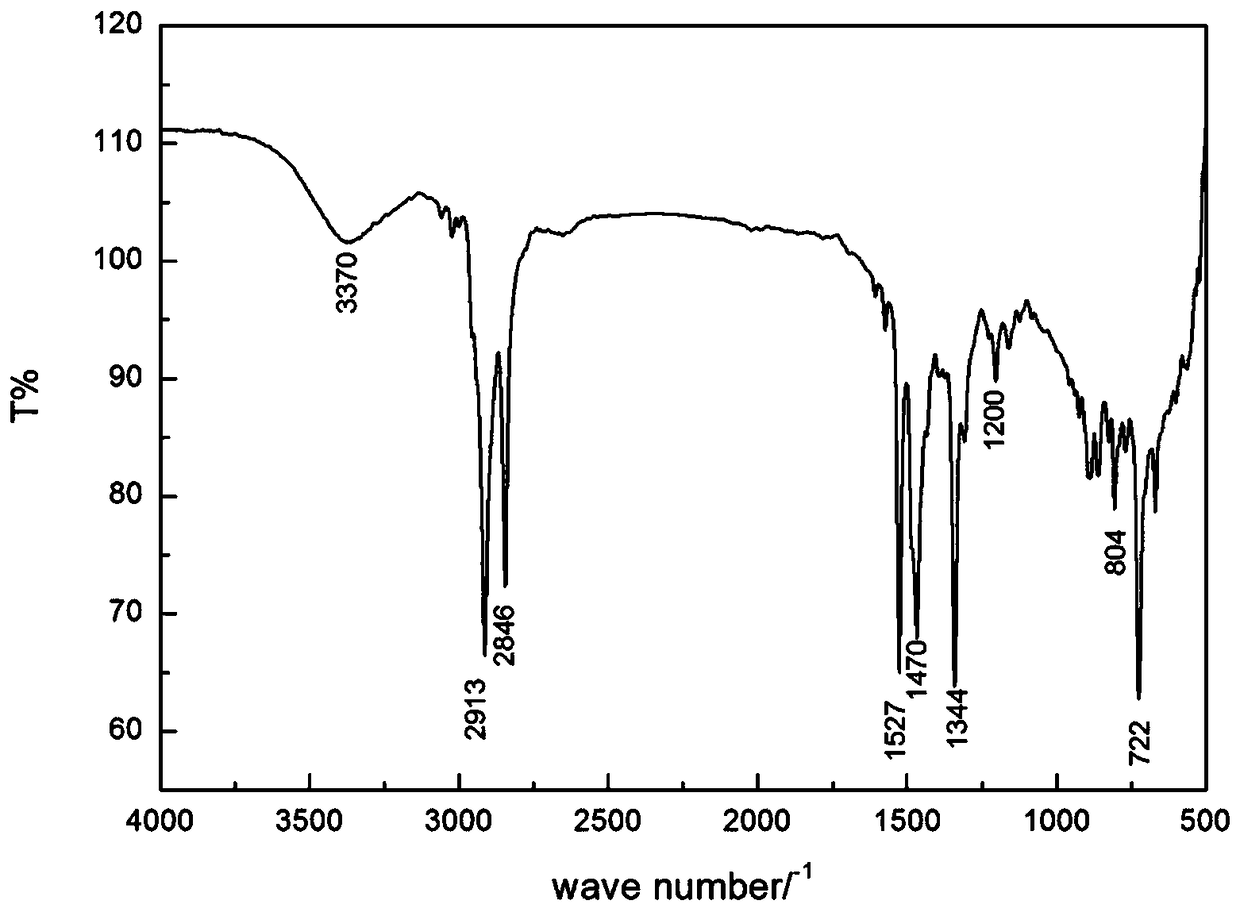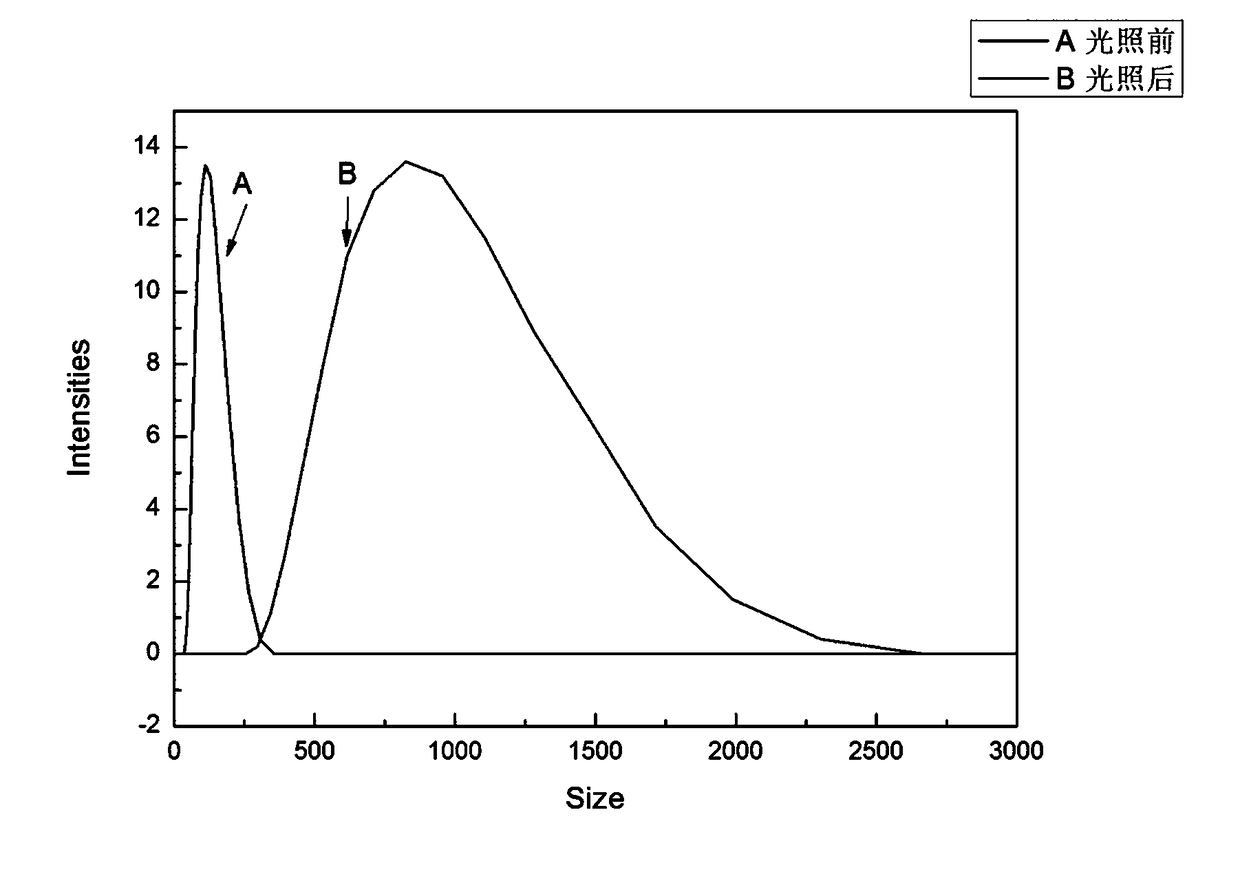Light-sensitive amphiphilic compound and preparation method and application thereof
An amphiphilic compound and light-sensitive technology, applied in the field of materials, can solve problems such as poor biocompatibility, easy to be rejected by the human body, and the impact of patient rehabilitation, and achieve good biocompatibility, good product assembly effect, and simple reaction Effect
- Summary
- Abstract
- Description
- Claims
- Application Information
AI Technical Summary
Problems solved by technology
Method used
Image
Examples
Embodiment 1
[0038] Embodiment 1: a kind of preparation method of photosensitive amphiphilic compound, comprises the following steps:
[0039] Step 1: Add 0.8g of N, N-dimethylhexadecylamine and 8g of acetone into reaction vessel A, stir for 10min at a temperature of 20°C and a rotation speed of 400rad / min, and mix well to prepare a mixed solution a ;
[0040] Step 2: Add 0.96g of o-nitrobenzyl bromide and 8g of acetone into the reaction vessel B, stir for 25min at a temperature of 30°C and a rotation speed of 200rad / min, and mix well to obtain a mixed solution b; Step 3: Add the mixed solution b into the reaction vessel A, stir and mix with the mixed solution a at a speed of 1500 rad / min, and react at a temperature of 60°C for 12 hours;
[0041] Step 4: The reaction solution after the reaction is placed in 35 ℃, 0.09Mpa and dried under the condition of 0.09Mpa, obtains crude product after drying; 1:1) to obtain the photosensitive amphiphilic compound.
Embodiment 2
[0042] Embodiment 2: a kind of preparation method of photosensitive amphiphilic compound, comprises the following steps:
[0043] Step 1: Add 1 g of N, N-dimethylhexadecanylamine and 10 g of acetone into the reaction vessel A, stir for 15 min at a temperature of 30 °C and a rotation speed of 200 rad / min, and mix well to prepare a mixed solution a;
[0044] Step 2: Add 1.2 g of o-nitrobenzyl bromide and 10 g of acetone into reaction vessel B, stir for 20 min at a temperature of 40° C. and a rotation speed of 400 rad / min, and mix well to obtain a mixed solution b;
[0045] Step 3: Add the mixed solution b into the reaction vessel A, stir and mix with the mixed solution a at a speed of 1800 rad / min, and react for 20 hours at a temperature of 50°C;
[0046] Step 4: The reaction solution after the reaction is placed in 35 ℃, 0.09Mpa and dried under the condition of 0.09Mpa, obtains crude product after drying; 1:1) to obtain the photosensitive amphiphilic compound.
Embodiment 3
[0047] Embodiment 3: a kind of preparation method of photosensitive amphiphilic compound, comprises the following steps:
[0048] Step 1: Add 0.9g of N, N-dimethylhexadecylamine and 9g of acetone into reaction vessel A, stir for 13min at a temperature of 25°C and a rotation speed of 500rad / min, and mix well to prepare a mixed solution a ;
[0049] Step 2: Add 1.08 g of o-nitrobenzyl bromide and 9 g of acetone into reaction vessel B, stir for 25 min at a temperature of 35° C. and a rotation speed of 300 rad / min, and mix well to obtain a mixed solution b;
[0050] Step 3: Add the mixed solution b into the reaction vessel A, stir and mix with the mixed solution a at a speed of 1600 rad / min, and react at a temperature of 55° C. for 16 hours;
[0051] Step 4: The reaction solution after the reaction is placed in 35 ℃, 0.09Mpa and dried under the condition of 0.09Mpa, obtains crude product after drying; 1:1) to separate the photosensitive amphiphilic compound;
[0052] The pure p...
PUM
 Login to View More
Login to View More Abstract
Description
Claims
Application Information
 Login to View More
Login to View More - R&D
- Intellectual Property
- Life Sciences
- Materials
- Tech Scout
- Unparalleled Data Quality
- Higher Quality Content
- 60% Fewer Hallucinations
Browse by: Latest US Patents, China's latest patents, Technical Efficacy Thesaurus, Application Domain, Technology Topic, Popular Technical Reports.
© 2025 PatSnap. All rights reserved.Legal|Privacy policy|Modern Slavery Act Transparency Statement|Sitemap|About US| Contact US: help@patsnap.com



